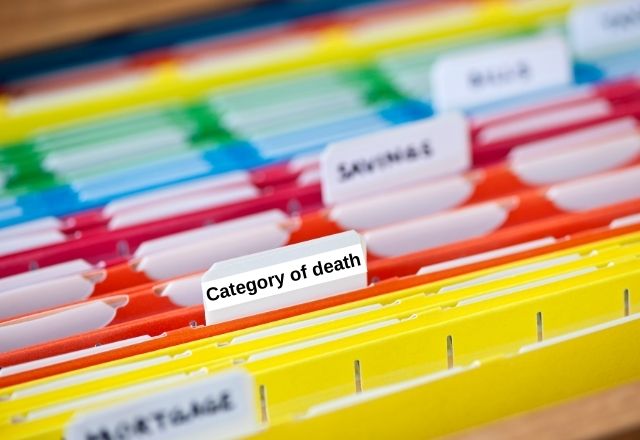Find below details of how CDOPs and CDR professionals can help our analysis by ensuring consistent recording of the category of death, as follows:
- Category 5, Acute medical or surgical condition – should include sudden unexpected deaths with epilepsy (SUDEP). These deaths should not be categorised as Category 10 (Sudden unexpected, unexplained death)
- Category 8, Perinatal/neonatal event – should include deaths caused by perinatal asphyxia. These deaths should not be categorised as Category 3 (Trauma and other external factors)
- Category 8, Perinatal/neonatal event – should include deaths related to cerebral palsy without evidence of cause. Deaths due to cerebral palsy with clear post-perinatal cause should be categorised as Category 6 (Chronic medical condition)
- Category 9, Infection – should include primary infection arising after the first postnatal week, or after discharge of a preterm baby. Deaths where there was an early-onset bacterial infection in the first postnatal week should be categorised as Category 8 (Perinatal/neonatal event) and not as Category 9 (Infection)
- Category 10, Sudden unexpected, unexplained death – should include deaths at any age where pathological diagnosis is either ‘SIDS’ or ‘unascertained’. These deaths should not be categorised as Category 3 (Trauma and other external factors)
A full description of each category is given below:
| Category | Name & description of category |
| 1 | Deliberately inflicted injury, abuse or neglect Includes suffocation, shaking injury, knifing, shooting, poisoning and other means of probable or definite homicide; also deaths from war, terrorism or other mass violence; and severe neglect leading to death. |
| 2 | Suicide or deliberate self-inflicted harm Includes hanging, shooting, self-poisoning with paracetamol, death by self-asphyxia, from solvent inhalation, alcohol or drug abuse, or other form of self-harm. Will usually apply to adolescents rather than younger children. |
| 3 | Trauma and other external factors, including medical/surgical complications/error Includes isolated head injury, other or multiple trauma, burn injury, drowning, unintentional self-poisoning in pre-school children, anaphylaxis and other extrinsic factors. Also includes proven medical and surgical complications or errors as the primary cause of death, but excludes deliberately inflected injury, abuse or neglect (category 1). |
| 4 | Malignancy Solid tumours, leukaemias and lymphomas as well as malignant proliferative conditions such as histiocytosis, even if the final event leading to death was infection, haemorrhage etc. |
| 5 | Acute medical or surgical condition For example, Kawasaki disease, acute nephritis, intestinal volvulus, diabetic ketoacidosis, acute asthma, intussusception, appendicitis; sudden unexpected deaths with epilepsy. |
| 6 | Chronic medical condition For example, Crohn’s disease, liver disease and immune deficiencies, even if the final event leading to death was infection, haemorrhage etc. Also includes cerebral palsy with clear post-perinatal cause. |
| 7 | Chromosomal, genetic and congenital anomalies Trisomies, other chromosomal disorders, single gene defects, neurodegenerative disease, cystic fibrosis and other congenital anomalies including cardiac. |
| 8 |
Perinatal/neonatal event This category includes four subcategories: immaturity/prematurity related, perinatal asphyxia, perinatally acquired infection and other perinatal/neonatal events. |
| 9 | Infection Any primary infection (i.e. not a complication of one of the above categories), arising after the first postnatal week or after discharge of a preterm baby. This would include septicaemia, pneumonia, meningitis, HIV infection etc. |
| 10 | Sudden unexpected, unexplained death Where the pathological diagnosis is either ‘SIDS’ or ‘unascertained’, at any age. Excludes Sudden Unexpected Death in Epilepsy (category 5). |
Please share: We would be grateful if you could share this information with colleagues involved in the Child Death Review (CDR) process.
Back to: Home | Other news

